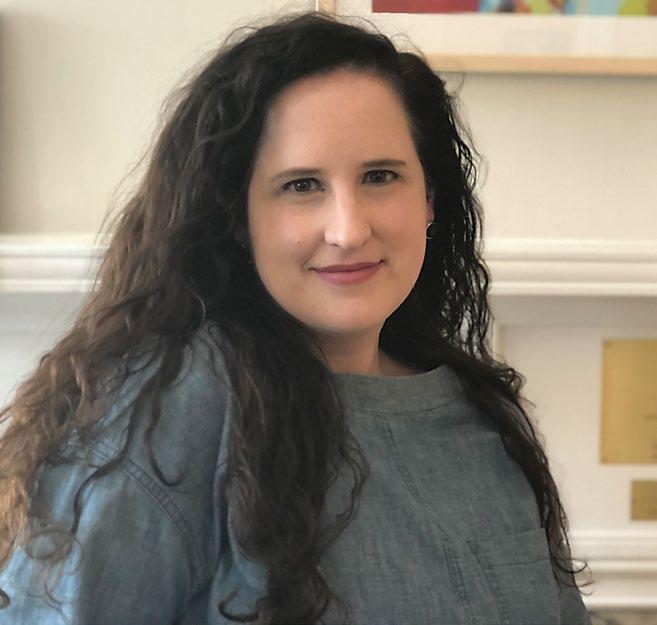
17 minute read
Moses Brown Past and Present, Sarah Lindblom ’07, guest editor
EDITOR’S LETTER Witnessing History
When Matt Glendinning reached out to me this past fall asking if I’d be involved in an exhibit of objects documenting the history of MB, I couldn’t say yes fast enough. While I was a student, I always had a vague sense of the school’s deep-rooted history from the oil paintings in Alumni Hall and the stories told by long-serving faculty members. But now, as a trained archivist with professional experience under my belt and the mandate to delve into the school’s rare materials, I could be a part of the effort building a solid display of research for the education and edification of the entire MB community.
Advertisement
During the research process, I, along with other members of the exhibit team, took a trip to the Special Collections at UMass Amherst where, in combing through three boxes of Moses Brown’s materials, we came upon one phrase again and again: Witness My Hand. This was a standard phrase used during Moses’ time to officiate hand-drawn, legally-binding documents, but immediately, we began to ponder a wider interpretation of these three words.
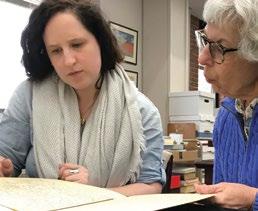
For my part, I first remembered lyrics of a spiritual “My Soul is a Witness,” which asserts that the honest life one has led sets forth an example that is a testament to God’s grace. And while much of the school’s current ethos stems from Moses’ venerable later years, his conversion to Quakerism and commitments to abolition and equal education for the sexes, our team unearthed documents, many in his own hand, that would cast him and his school onto a much more complex spectrum: Moses the slaveholder, Moses the aid worker, Moses the flawed but atoning founder of an institution built on the aspirational epithet “For the Honor of Truth.” Holding a document in my own hands that was written in Moses’ hand that coldly listed the first names and prices of human beings stirred up such contradictory gravitas while reckoning it with the image of the benevolent, visionary old Quaker. Reading through official school histories delineating how “both sexes were entitled to an education; but boys and girls were to be kept strictly apart,” somehow had to square with my own experience of learning and socializing with my male classmates unselfconsciously. Moses Brown’s own painful and redemptive truth is the school’s truth, and more importantly, our truth. We are the ones left to witness, as completely as we can through the inherent lens of our modern mores of Black Lives Matter, #MeToo, and general “woke-ness,” everything Moses Brown’s hand began: to fully survey, fairly examine and honestly reconcile the truth of our school.
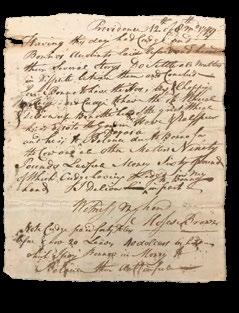
Sarah Lindblom ’07 joined MB in ninth grade. She says her advisor Jamie German was the perfect ‘constant’ in her fouryear high school experiment and says Moses Brown taught her to be disciplined, resourceful, critical and ambitious; she appreciates MB’s combination of care and challenge, critical examination and creative thinking. Sarah started her career in archives as a student assistant in the archives and special collections at Smith College. After majoring in Classical Studies and Dance, she obtained her MLIS at the University of Maryland, concentrating in archives. She’s also worked at the Rhode Island Jewish Historical Society, Rhode Island Historical Society and Library of Congress and is passionate about seeing MB’s archives become an accessible educational resource for the school and larger community.
MOSES BROWN: Past & Present What do you remember most about your MB experience? This past fall, Moses Brown School began renovation of both the Ward (Bird) Room and the Archives in Middle House. MB is turning the Archives room into a museum-quality exhibit of MB history in time for this year’s Reunion in May, led by past parent and current trustee Rebecca Leuchak P ’04 ’09, an art historian. The installation will be unveiled at Reunion this spring. If you can’t get to MB this year, browse these pages to delve into MB’s impressive history and glimpse new developments around the school today.
Oh, the Story an Archives Can Tell! Moses Brown School has a rich archive, collections of historic materials about the school and the people who have formed its community over the centuries. This year MB students, faculty and staff, alumni and parents have been exploring the Archives to get a sense of our history — Moses Brown, the man who founded the school, as well as Moses Brown the institution, in its daily life and everyday world. Many have contributed to this effort, building on the incredible and painstaking work of long-time faculty member Doc Odell. Head of School Matt Glendinning has cherished a long-time dream of creating a museum-quality exhibit presenting the story the Archives has to tell. Others share that dream, and through the generous donations and support of many alumni, funding was secured to make this dream a reality. This school year, a team of faculty, staff and students began researching in order to bring to life the objects and people of the school’s past. To peruse a student scrapbook from 1919 or read Moses Brown’s hand-written notes is to sense the world of MB of long times past. Says Rebecca Leuchak, Friend, trustee and former MB parent, “These objects truly put us in touch with how much history can provide to help us understand who we are as a school and community today.” Make sure to see the exhibit during Reunion Weekend this May 8-9, when the history of Moses Brown is unveiled in an exhibit entitled “Witness My Hand, Moses Brown.”
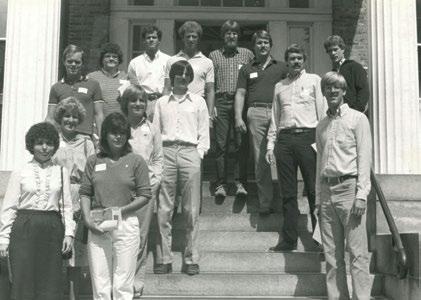
Back to School! The annual new faculty (and staff) photo is an MB rite of passage. New faculty of 1982 look confident and ready to start the new school year. Did you have any of these teachers and can you name the two who are still permanent members of the MB faculty?
The Front Gate and Front Circle in Winter, 1956.
Dorm Days In its early years, Moses Brown welcomed boarders to campus, welcoming students from all over Rhode Island and New England and beyond. In later years, the school moved to a “day school” model to meet the needs of changing times. The boarding department saw its most robust capacity in the 1970s, when international students came to MB to study from around the world, including the Middle East and Asia. MB phased out boarding in the 1990s, hoping to attract more local students.

What’s in a name? The most popular names in MB’s graduating classes, past and present:
Girls at MB
MB first opened in Providence in 1819 as Friends Boarding School. The first student to arrive that year was Maria Fuller of Lynn, Massachusetts, age 12. While MB was originally co-ed, the school became boys-only in 1926 (through the fall of 1976). The Girls’ Parlor was likely located in the northeast corner of the east wing.
1850s : Caroline and Mary Class of 2020 : Abigail, Benjamin, John/Jack
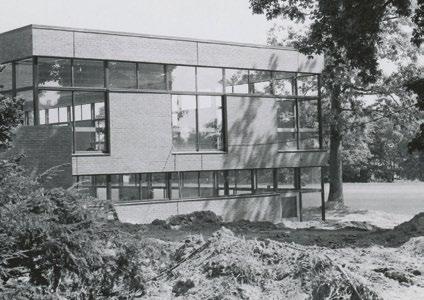
Design for a New Lower School RISD architect Jeff Blydenburgh left his mark on campus in renovations of the 1970s including the redesign of the Henderson Building (1971) and the playground for the lower school in 1976 (before going on to transform Davol Square in Providence). In 1976, he was consulted for a temporary playground for the lower school and suggested a spot on the hill by Campanella Terrace. It remains the location of the Lower School playground to this day. An addition was added to the lower school in 1985. See page 6 for a look at the new plans for lower school.
Music Matters Did you play an instrument while a student at MB? The annual Holiday All-School Music Concert was launched by Head of School Dave Burnham in 1987, establishing a new Moses Brown tradition as a way to bring the whole school community together. “Despite the uncertainties of our world, we who work and live and learn together at Moses Brown have been given wonderful gifts. A Holiday Concert is an opportunity to celebrate this fact and to express thanks. It is a time to share our gifts and to recognize that the world can move ahead only to the extent that its people love each other. Is not this what we, above all, want our students to believe? … in this Quaker school we DO believe in the goodness and light which is in every person.”
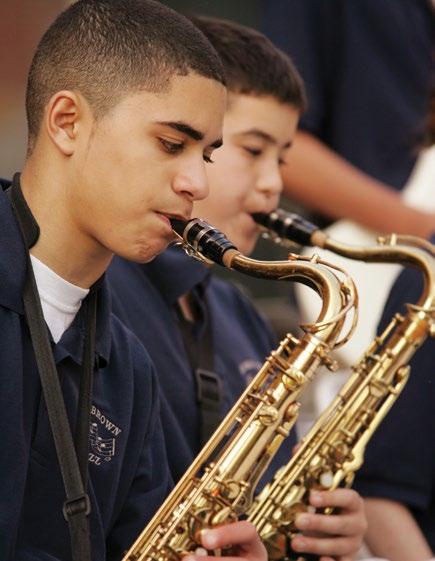
The Power House July 5th, 1945 was the last day the old engine/coal room worked, before the school switched to power via the Narragansett Electric Company. Before then, students were enlisted to transport coal! In 2021, the Power House will become the home for the new lower school Commons.
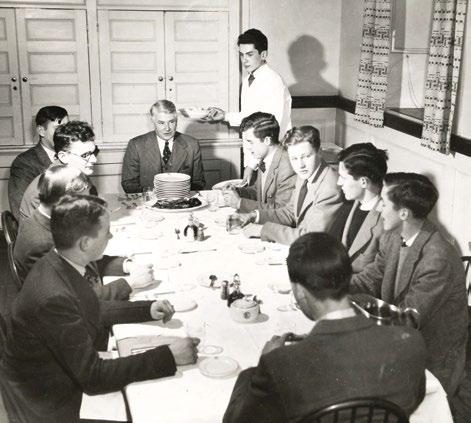
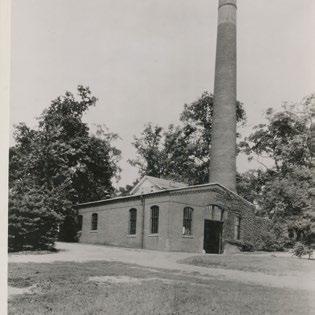
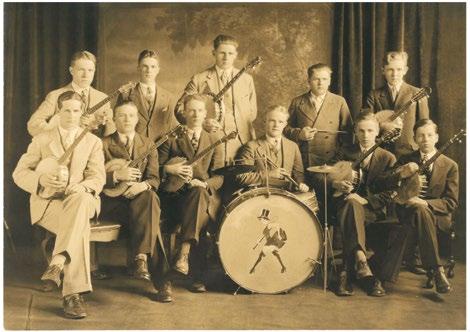
Strike up the Band: the MB Banjo Club, 1927 Clubs on campus today include the Jewish Cultural Club, Versatones, Community Outreach, language clubs and Equal Voice. Two hundred and eighty-four students also perform in MB musical groups.
On the Menu This is what MB lunch looked like in 1942 at mid-century Moses Brown. In the MB dining hall of today, students enjoy lunches served by SAGE Dining Services, with an emphasis on locally sourced and from-scratch options. The dining hall is a collaborative effort between MB and SAGE with a focus on sustainability, including a compost program, recycling of cooking oils and the elimination of the sale of plastic bottles on campus.
The Moses Brown reception area, or “Bird Room,” is famous for its contents, which were donated to the school in 1861. The case includes two extinct wild passenger pigeons, as well as a mourning dove, mockingbird, blue heron, cottontail rabbit, red fox and platypus.



Toward an MB Arboretum The Grove is the spiritual heart of Moses Brown. Still a peaceful spot, it’s the site of annual Commencement (weather permitting) as well as a Peace Garden. MB’s campus today is dotted with beeches, oaks, pines, dogwood, maples and cherry and several trees on campus are dedicated to faculty/ staff serving 30 years or more. Several students and faculty in the upper school have focused their efforts toward establishing an arboretum at MB with plans to formally label all 38 trees planted in honor of faculty/staff with 30+ years of service to MB, a tradition which started in 1998. Each student in last year’s immersive course adopted a tree and learned about it and its faculty/staff honoree. During a BioBlitz as part of this year’s immersive, students will be identifying many of the older trees on MB’s campus, as well as many of its other woody plants. A generous grant from the Parents’ Association has provided for plaques to be staked near the trees during an Arbor Day event on April 24. If the school can identify 100+ species on campus, MB will then be able to apply for Level II accreditation as an official arboretum, celebrating the wonderful trees and plants found on our historic campus.

Look at these fresh-faced new hires! In fall 2006, MB’s new employees took a moment to gather together.

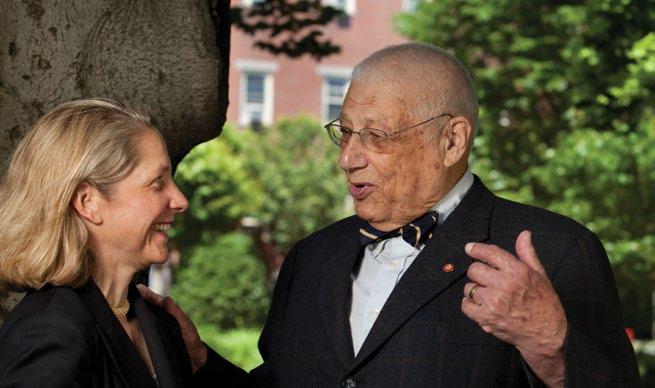
MB elected its first female alumni association president in 2001: Emily Low Boenning ’81 MB elected its first female alumni association president in 2001: Emily Low Boenning ’81 shown here with her father Ted Low ’44.
12 MB’s current seal and motto date to 1904. Before this, the school’s motto was: “Veritas Nunquam Perit.” Can you translate that? That Seals It
Answer: Truth Never Fails

In 1902, the Moses Brown gymnasium was built and named Hawes Gymnasium, via the bequest of Sarah J. Hall, in honor of her parents complete with physical apparatus, swimming pool and bowling alleys. Today it’s the site of the Walter Jones Library and includes ample facilities to exercise your mind: the library houses approximately 6,000 items and has two professional librarians on site for middle and upper school.

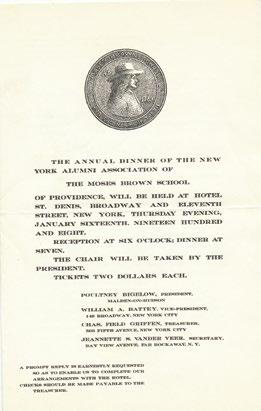
Alumni Events Do you think alumni events around the country are something new? Not at all! In 1908, alumni gathered in New York City for a gathering at the Hotel St. Denis on Broadway and Eleventh Street. Dinner was just $2 each. Today, alumni events are free and take place in NYC, as well as California, D.C., Seattle, Boston and Newport. Think we should hold an event for alumni near you? Tell us!
In 1930, without a field house, Moses Brown runners ran around the back circle on a board track, keeping their legs strong for winter workouts. Over the years, MB has boasted some of the fastest runners in the state and country and that holds true today, including freshman Sophia Gorriaran, who is the New England mile champion and national record holder for freshmen in the 800m (2:03.98), and senior Kolya Markov-Riss, who holds the school record in the 800m (1:56.52) and placed sixth in New England in the 600m.
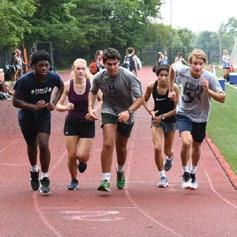
High Tech The metamorphosis of MB’s technology offerings has transformed greatly in just a generation.
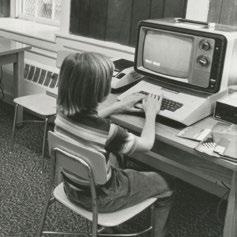

Bruce Shaw has played a number of roles here at MB over the years, as a faculty member, coach and now staff. Now retired from teaching, Bruce continues to work part-time at MB as Assistant Director of the Woodman Center where his years of tech and crew experience come in handy. How many Moses Brown shows have you crewed, Bruce?
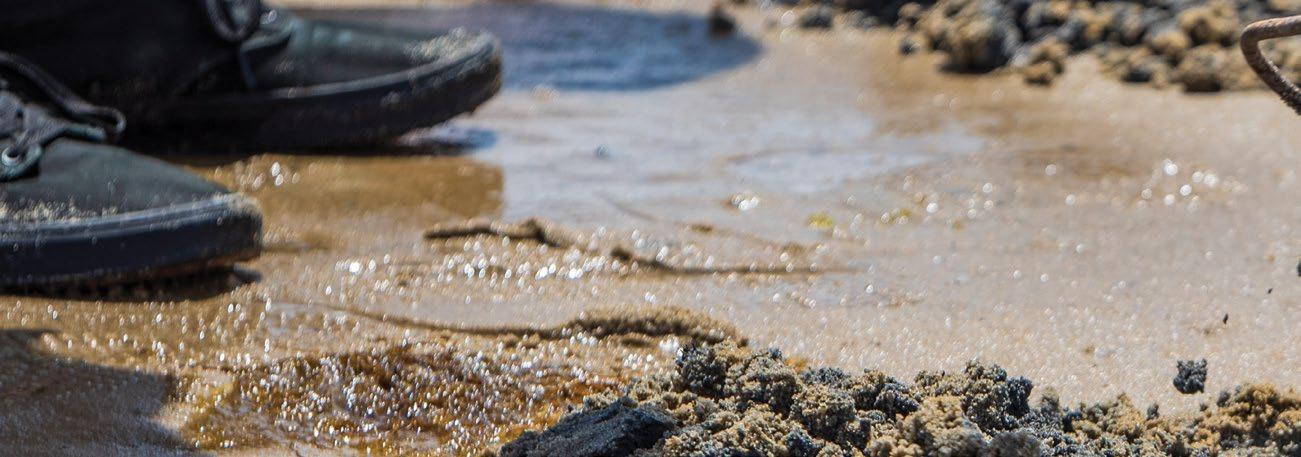
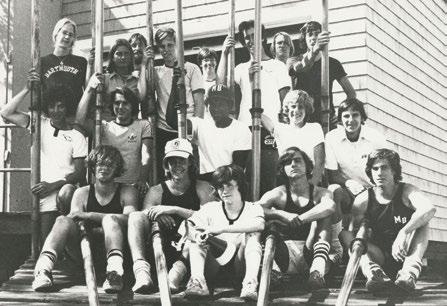
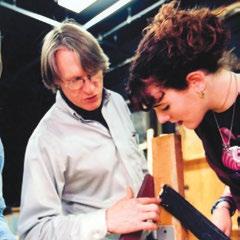
Did You Know?
•An astronomical observatory was erected at MB in 1862. •Alumni Hall was built in 1868 and included living quarters for girls; the Alumni Association contributed one-fourth of the cost as an initial donation. •Electricity was installed at MB in 1895.
Moses Brown’s front gate was donated in 1906 by alumnus Joshua L. Baily and his five sons in memory of their wife and mother, Theodate Baily. The gate was originally going to be located at the Hope Street entrance, where Mrs. Baily would watch the boys enter the schoolgrounds from her window across the street. However, a Boston architect
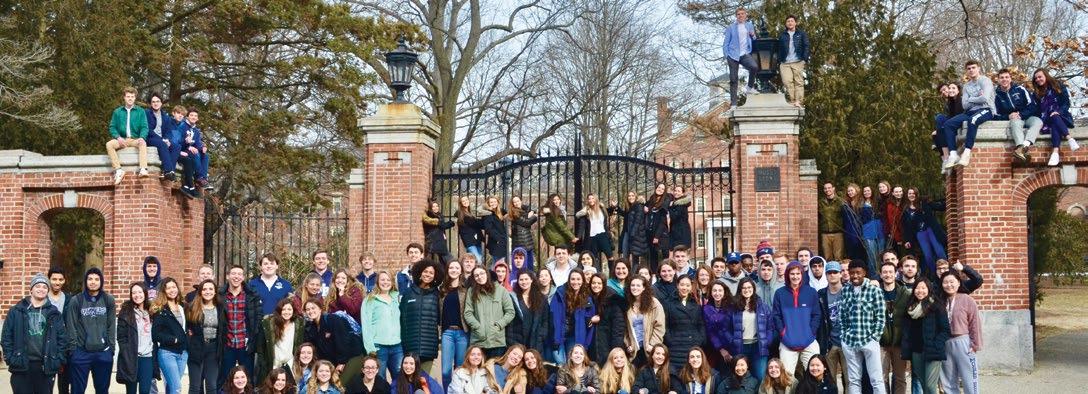
and a school committee member proposed that the gate be moved to the entrance on Lloyd Avenue, which had previously been the main entrance for the school. This proposal was met with some trepidation, since the entrance on Lloyd had become a “rendezvous for objectionable characters, both men and women.” In the end, it was deemed that the main gate should open to the main building on campus, similar to the Van Wickle Gates at Brown. Thus, the front gate came to be located on Lloyd Avenue. As an annual rite of passage, the senior class takes their photo at the gate for the yearbook.
Senior Projects Take Root at MB MB’s Senior Project program launched in 1970. In an attempt to keep seniors engaged in school after they had been accepted into college, headmaster Peter Mott offered to cancel their classes at the end of the year for “investigations of environmental problems in the greater Providence area.” Sixty-two seniors agreed to try the two-month program and set out to tackle a wide range of topics on life in Rhode Island: from airport congestion to water pollution. Students presented their projects during an alumni reception in the newly Astro-Turfed Field House. The project was deemed a success and senior projects continued on.
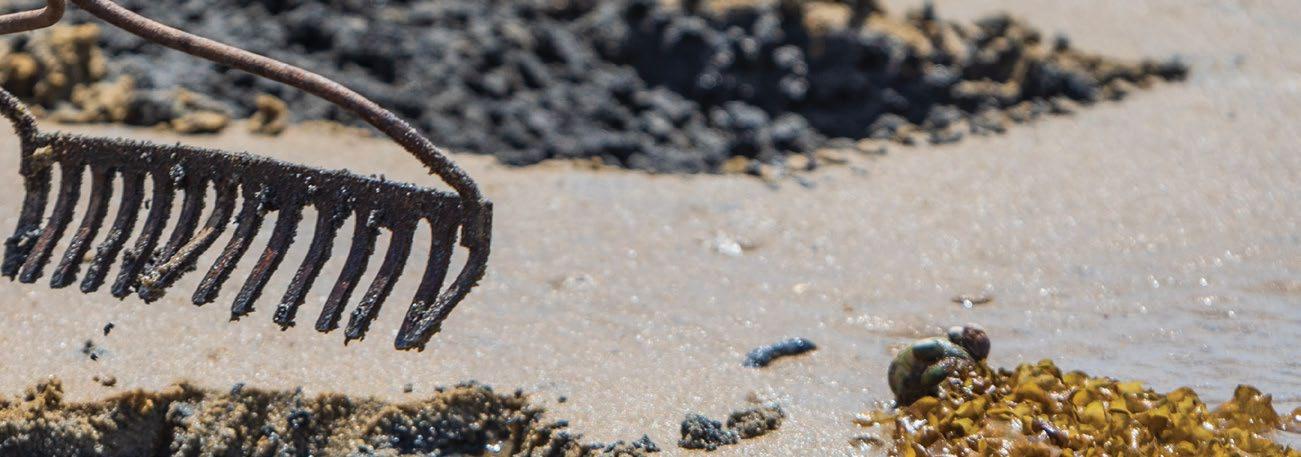
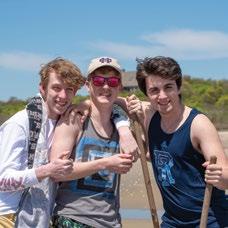
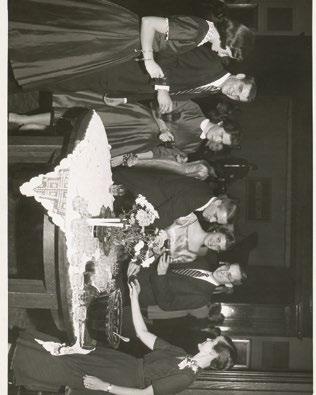
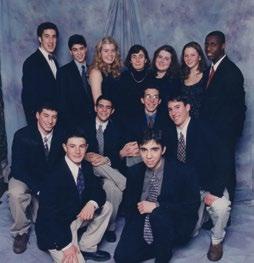
Quaker Nation: Sports at MB, Then and Now A History of Health and Physical Education at Moses Brown School (from school catalogs, 1832-1944) 1855 - Daily exercises in the open air during suitable weather is required. 1858 - A gymnasium is added to provide exercise during poor weather. 1871 - The school catalog states, “Each girl should be furnished with a gymnasium dress.” 1873 - “It has become a maxim, in the management of the school, that health should be made a matter of first importance, and that physical development should go hand in hand with intellectual culture.” 1897 - New athletic fields are built. 1898 - Cycle clubs are popular and athletic instruction is offered for boys and girls, separately.
Dance Card Until the return of coeducation, MB welcomed students from Lincoln for “tea dances.” Today school dances are now held at the Woodman Center. MB opened its doors to students from other independent schools, holding Rhode Island’s first “Come As You Are” dance, co-sponsored by the GSAs at MB, Lincoln, Wheeler and PCD. And this past year, the lower school started a new tradition — an annual family dance!


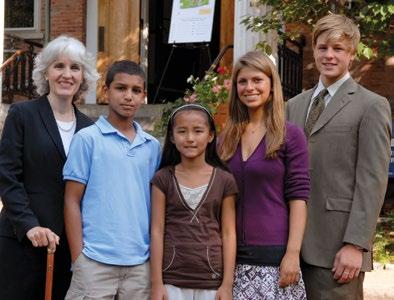
Annual Convocation is an MB rite of passage, launching hundreds of Moses Brown students on their Moses Brown career. A decade ago, students gathered with Head of School Joanne Hoffman to start the new school year: Dylan Neel ’11, Gabby Garofalo ’14, Natalie Triedman ’08 and Nick Gilson ’07.
Good Timers The current teachers with the most years of service to MB are Randy Street, Jim Skillings and Kristin Street. Together, they celebrate more than a century of combined service to MB this year. The longest-serving staff member is Reenie Ferreira, Office Assistant / Summer Camps Extended Day Director, celebrating 34 years at MB this year. King “Doc” Odell holds the school record for longest-serving employee, having taught at MB from 1953-2005 and continuing to serve as school archivist.
One of the major changes Moses Brown has seen in recent decades is the improvement of its grounds.
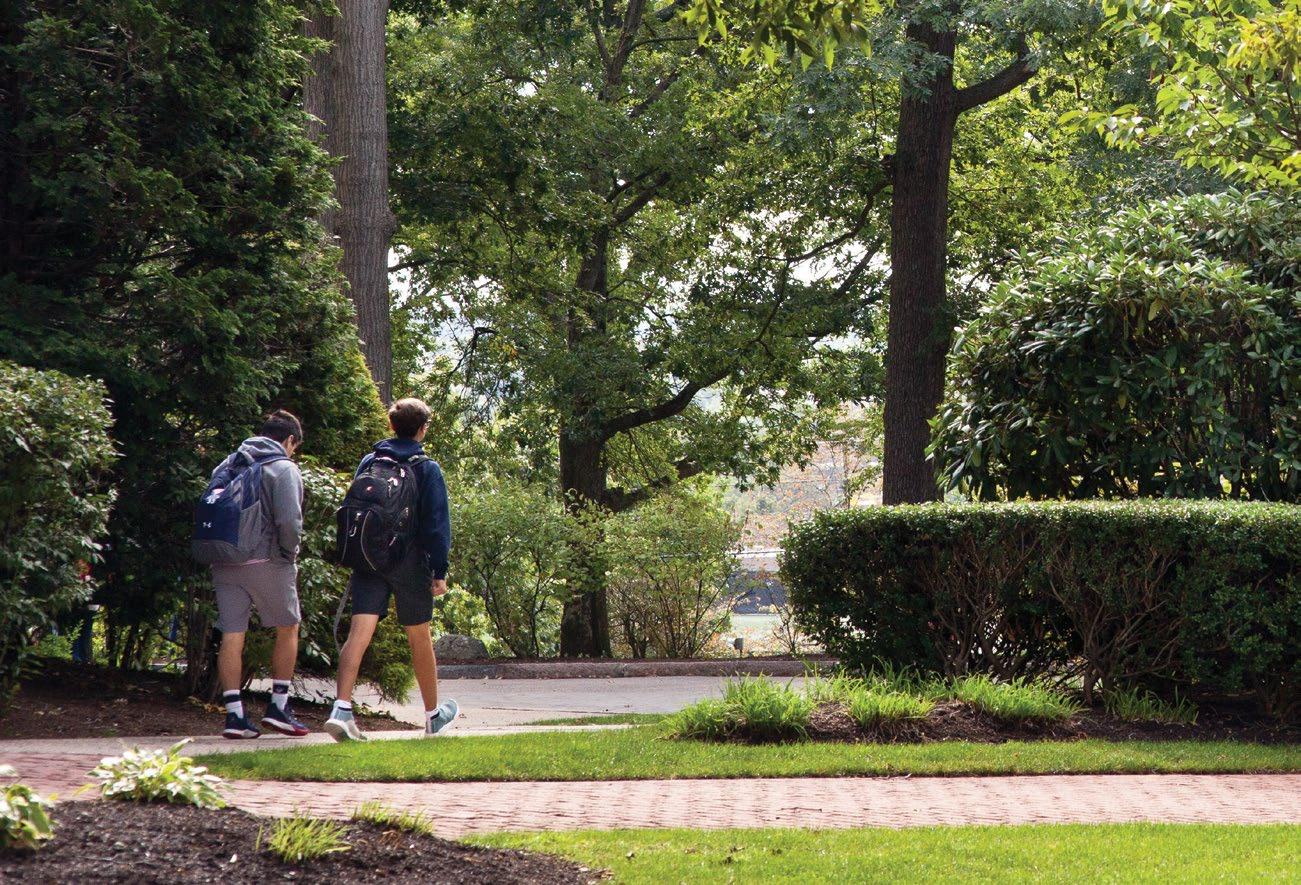
The Passage of Time The tall clock in the Head of School’s office is one of the most enduring symbols of the passage of time found on campus, manufactured in 1817 by Mr. John Bailey, Jr. The Baileys were Quakers and John, Jr. a prominent abolitionist. The dial includes a painted sketch of Moses Brown by his apprentice William Wall of New Bedford. Only 16 when he drew the school’s portrait, Wall went on to become a prominent artist whose work is displayed in the New Bedford Whaling Museum and Boston’s MFA. The clock is wound twice weekly by Erik Wilker, director of administrative and strategic affairs, and continues to keep good time for MB; you may even hear it chime the hours as you walk through Middle House.

Alumni:
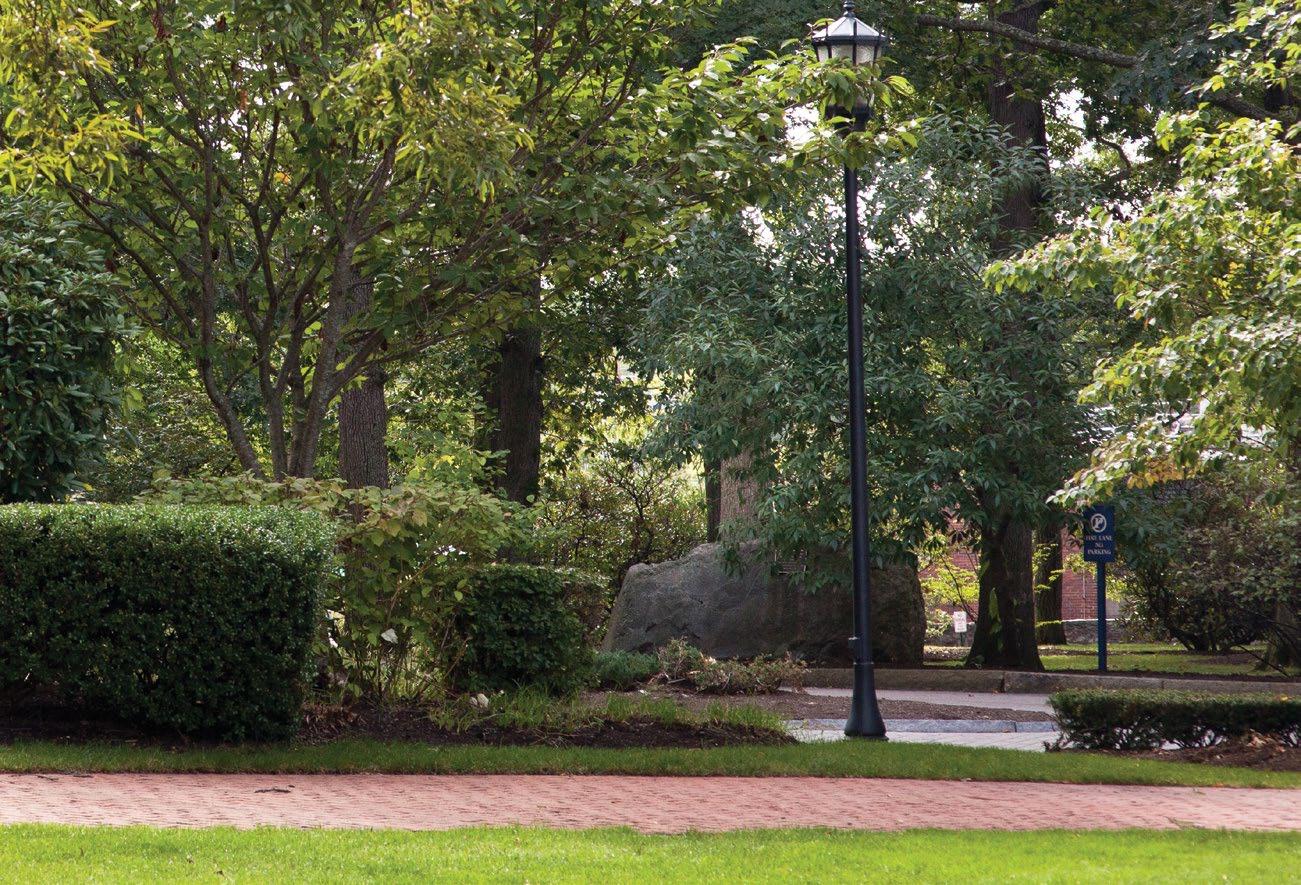
We’d love to see photos from your own MB archives or hear stories from your MB days. Please share stories, items or photos from your own personal archives. What would you put in your own personal MB time capsule? Share your MB memories by emailing alumni@mosesbrown.org or posting at our Facebook page: facebook.com/MosesBrownAlumni.









